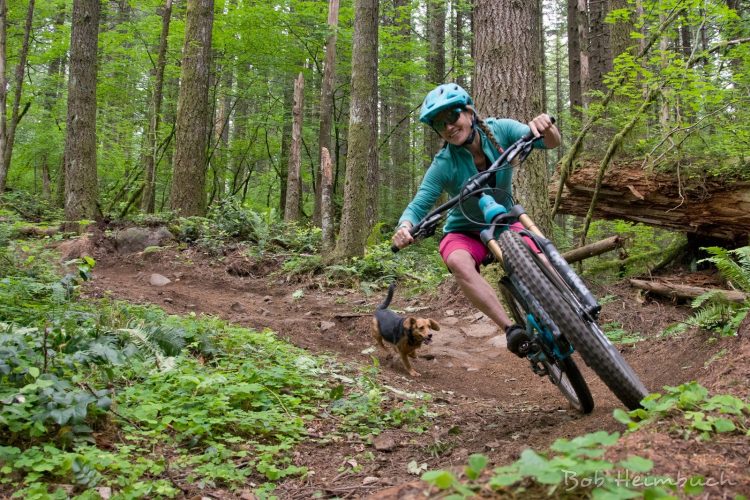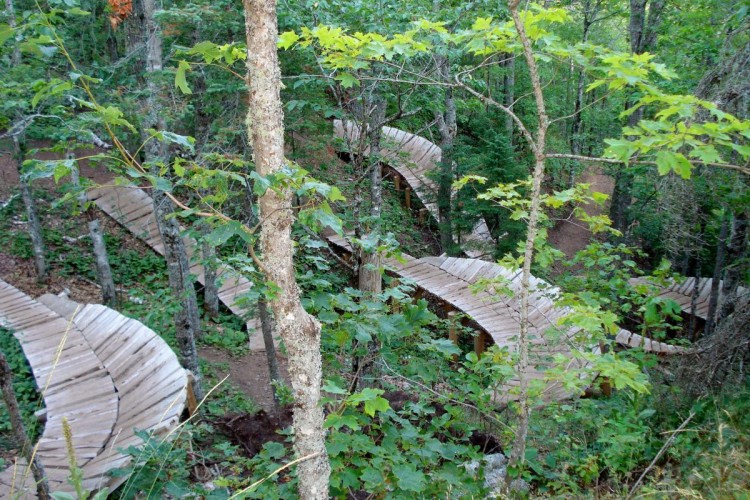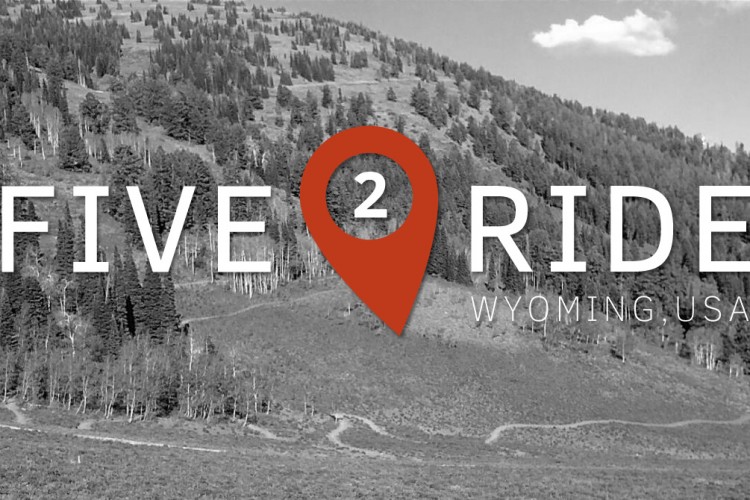No, the answer to all of our problems isn’t eating babies. And while I contemplated attempting to write this blog post as a satire, I realized that a) I’m not clever enough to do so and b) the average internet reader probably isn’t clever enough to pick up on satire anyway (I’m sure you are above average, though).
Anyhow, I would like to propose a relatively simple solution to trail building in the modern world with an ever-increasing number of mountain biking disciplines and types of mountain bikes. In this blog post I am harkening back and expanding on the topic broached by my previous controversial hit-article, Sterilized Singletrack: A Spreading Epidemic.
Simply put: When building a trail system, build a little bit of something for everyone.
Yes, I know–this isn’t a ground-breaking principle. In fact, it’s the idea behind IMBA’s “stacked loop” trail design. In a stacked-loop design, the easier trails are closer to the trailhead and the more advanced trails are further out around the outside of the system, requiring more time and effort to get there which most advanced riders will gladly put in.
Personally, I have seen this design executed well (Five Points comes to mind) and rather poorly (theJackrabbittrails in North Carolina).
Don’t get me wrong–I loved riding Jackrabbit! However, it fails to offer a diverse mountain biking experience. There are a few trails around the outside of the system that are slightly more difficult than the entry trails, but examined in a broader context they barely pass intermediate status. So yes, while Jackrabbit does feature a stacked-loop design, it doesn’t fulfill the purpose the design was originally intended for.
There are some trail builders out there that get where I’m going with this article, and to them it sounds like I’m just preaching to the choir. For instance, the new trails coming to Coldwater Mountain in Anniston, Alabama promise to offer something for everybody:
If all goes according to schedule, in three or four years Coldwater Mountain will be home to a network of 60 miles of mountain bike trails constructed for various skill levels. Also included will be facilities known as a gravity area, a skills park and a pump track, all of which will allow riders to enjoy the facility without pedaling off deep into the forest. (Source)
Rock armoring at Coldwater Mountain. Photo: IMBA.
Other trailbuilders have been slow to jump on the something-for-everybody bandwagon, and would instead build miles and miles of vanilla trail that most people will enjoy, while challenging no one. It is to those trailbuilders that I speak today.
The Formula
For people in charge of building a new system from the ground-up, or looking to expand and enhance a new system, I propose the following breakdown of trail difficulty:
- Beginner (green): 15%
- Intermediate (blue): 45%
- Advanced (black): 30%
- Expert (double black): 10%
And here’s why…
Beginner
“Firebreak Tr.” atHarbison State Forest, Columbia, SC.Photo: jaybird57.
In this breakdown, let’s take, for example, a 20 mile trail system that is being built. With 15% of the trails designated for complete n00bs, that would provide 3 miles of singletrack designed specifically for absolute beginners. If they are completely new to riding bikes, 3 miles may be all they want to do. If, however, they are relatively fit and athletic, they could pretty easily graduate to intermediate trails, potentially on their first ride.
Intermediate
Thunder Mountain, Red Canyon, Utah. Photo: simongauthier.
With a proposed 45% of the entire trail system designated as intermediate trails, this would work out to 9 miles out of a 20 mile system – the single biggest chunk. Many beginner riders will be able to ride these trails with relatively little practice, and they’ll be good for advanced riders looking to log more mileage. These intermediate trails are the most versatile, and many trail systems around the nation already feature these types of trails almost exclusively. In my proposed system, while they are still the biggest single fraction, intermediate trails are only 45% of the total compared to many current trail systems that consist of 80-90% intermediate trails.
Advanced
Rider: Mandil Pradhan. Location: Mustang Valley, Nepal. Taken February 2012. Photo: Gaurav Man.
The advanced trails I’m talking about are true black-diamond trails–not the “black-diamond” trails that some trailbuilders illegitimately classify as advanced, but truly challenging trails with rock gardens, root webs, off camber corners, punchy climbs, steep descents, bridges, skinnies, and the occasional jump and drop. At 30% of the total 20 miles, this would comprise 6 miles of the trail system.
Expert
Crested Butte Mountain Resort, Colorado.
Expert trails border on the insane, with challenging double-black-diamond trails where it would be wise to have a dual-crown fork. While 10% of the entire trail system is a very small slice of the overall pie, 2 miles of true downhill trail would probably be plenty to keep the gravity crowd satiated, especially considering the lack of true DH offerings in many places around the nation.
Caveats
Some trail systems, especially in urban/suburban areas, simply don’t have the room to build trails that cater to everyone’s needs. In that instance, I can see why a trail, especially in a public park, would need to be built to the least common denominator. However, in urban areas where there are a number of trails and each individual park only has 5-10 miles of singletrack, the problem could still be solved by having each individual park catering to a different level of rider: beginner, intermediate, advanced, or expert.
I know that building advanced trails can take more time and more money than many organizations are willing to put in. Sometimes it’s just so much easier to ramrod the trail machine through and be done with it.
But will a trail system with 20, 30, or 40 miles of trails that all look so similar that riders have a constant sense of deja vu really have better staying power than a more diverse offering? That’s the question I pose to you.
If you agree with me and decide to adopt this trailbuilding theory, the actual numbers/percentages could vary, of course, but the main concept should remain the same: we need to build more than just intermediate trails–we need to provide trails that span the entire spectrum of riders.
What do you think? What’s the perfect balance of trail difficulties?

























